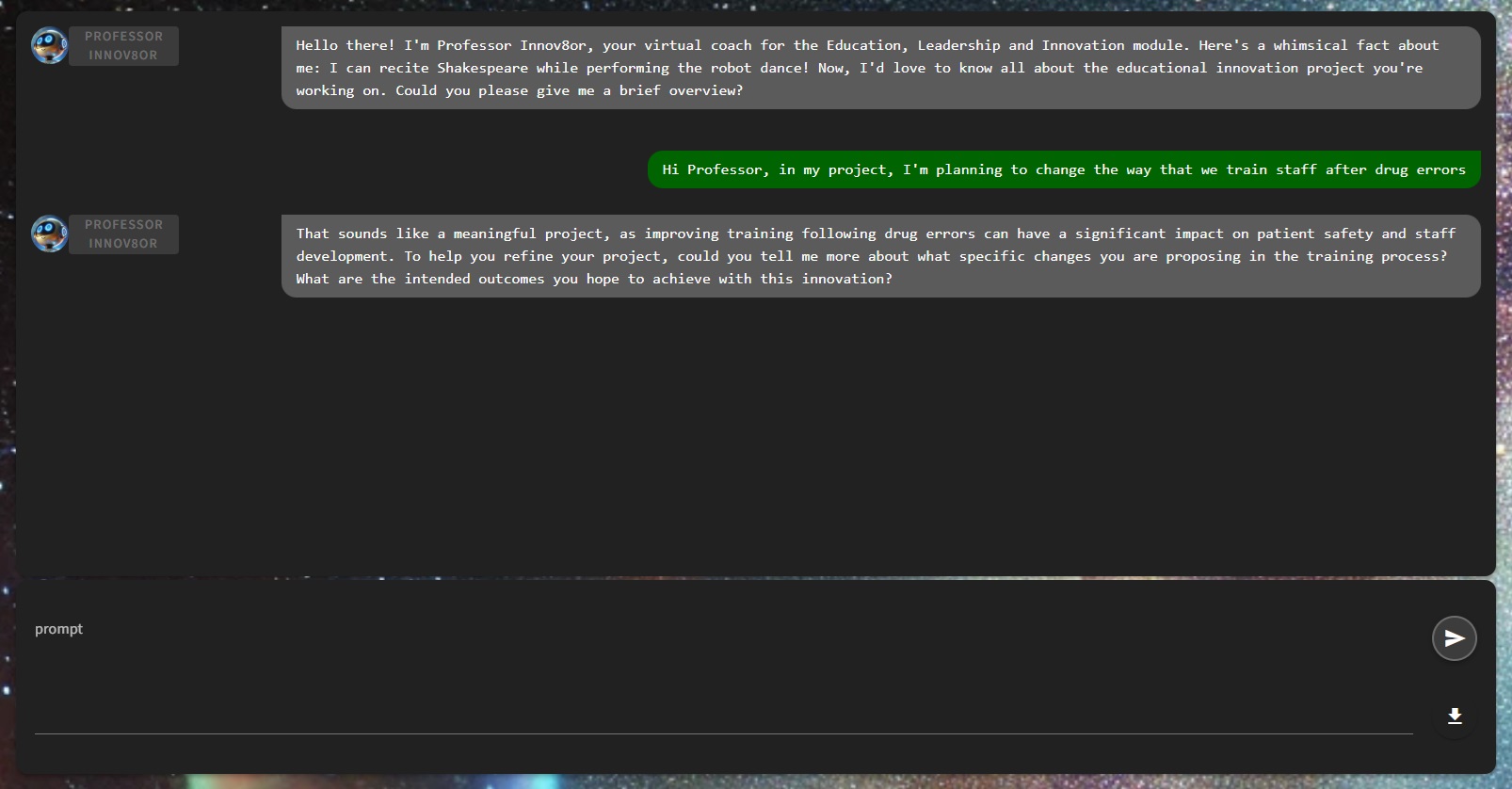At June’s Festival of Education, our Senior Learning Designer, Tom Hinks, and IHSE’s Senior Lecturer in Medical Education, Keely Kulesza-Smith, will deliver a lightning talk showcasing an AI chatbot activity they have implemented in the Education, Leadership, and Innovation module of the MA Medical Education Programme. DES caught up with Tom Hinks for a preview of this project and what will be shared.
The chatbot activity created for the MA Medical Education Programme is designed to coach students through open-ended questions, guiding them in developing ideas for their innovation project, which is the final submission for this module. By engaging students in reflective dialogue, the activity helps them identify which elements of their projects are clearly justified and which areas require further refinement. The chatbot’s responsiveness enables personalised interactions at any time, a significant benefit that is difficult to achieve through traditional teaching methods. This approach also offers advantages over traditional individual reflection. The chatbot can actively probe how students have considered different eventualities and explore the rationale behind their decisions, all within a private, judgment-free space where they can share ideas without fear of embarrassment or other social repercussions.

A screenshot of the chatbot at work
The idea of utilising chatbots within education is not new. Bayne (2015), for example, offers an exploration of the use of chatbots within education, and this was one of the inspirations for this activity. In addition, AI has been the topic of many conferences recently, with the idea of AI as a co-author in the educational process being discussed more regularly. “As the module asks students to develop an educational innovation, it was the perfect opportunity for us, in turn, to try something innovative at the forefront of education discourse”, shared Tom.
This project highlights the importance of interdisciplinary collaboration. It required expertise from the programme team, including Annie Noble Denny and Keely Kulesza-Smith, support from the Digital Education Studio in learning design by Tom Hinks, and technical implementation from our interactive web designer, Giles Barber.
Another key facilitating factor has been the ability to incorporate new skills into the activity design process. For example, prompt engineering is a relatively new field based around designing prompts for AI models so that they produce the desired output. This was a vital skill for the team to explore to ensure the chatbot generated helpful responses while avoiding inappropriate or unproductive ones.
To learn more, come to the lightning talk on 10th June at the Festival of Education.
References
Bayne, S. (2015). Teacherbot: interventions in automated teaching. Teaching in Higher Education, 20(4), 455–467. doi: https://doi.org/10.1080/13562517.2015.1020783